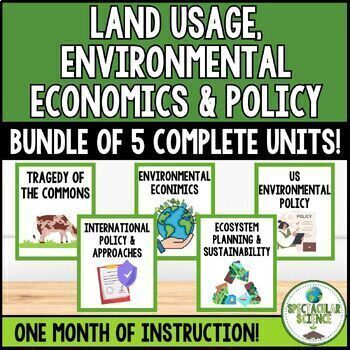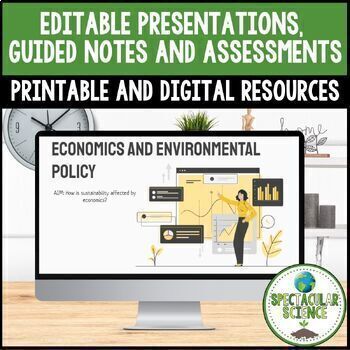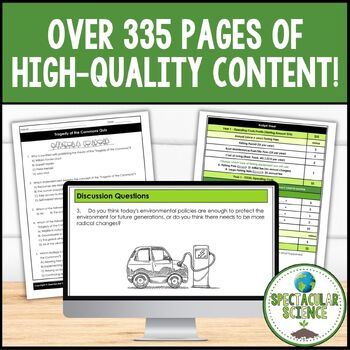Land Usage, Environmental Economics and Policy Unit Bundle
- Zip
What educators are saying
Products in this Bundle (6)
showing 1-5 of 6 products
Bonus
Also included in
- Environmental Science is a laboratory course that is designed to help students understand the complex nature of our environment and make responsible decisions regarding its protection and use. Students will be introduced to problems of land use, human population, environmental health, and sustainabiPrice $400.00Original Price $484.00Save $84.00
Description
Dive into the complex interplay of human activities and the environment with this comprehensive Land Usage, Environmental Economics and Policy Unit Bundle. Tailored for educators both seasoned and new, this resource aligns seamlessly with the Next Generation Science Standards (NGSS) to elevate your teaching with innovative and engaging lesson plans.
Delve into the complexities of environmental economics, sustainable ecosystem planning, and the far-reaching impact of both domestic and international environmental policies. Equip your students with a nuanced understanding of the critical challenges and opportunities inherent in the dynamic interplay of land usage and environmental governance.
Why Choose This Bundle:
✅ 10% savings on this comprehensive bundle!
✅ Growing bundle—receive new resources added for free!
✅ Aligned with NGSS for a seamless fit into your science lesson plans
✅ Engaging activities, assignments, and presentations to enhance student learning
✅ Bonus resources, including Detailed Topics Guide Unit Exam, Answer Key, and Unit Pacing Guide
This bundle equips educators with the tools to guide students through the multifaceted landscape of land usage and environmental policies, fostering a deep understanding of the challenges and opportunities that lie at the intersection of ecology and economics.
✎ WHAT'S INCLUDED?
- Tragedy of the Commons Unit
- Environmental Economics Unit
- Ecosystem Planning and Sustainability Unit
- United States Environmental Policy Unit
- International Environmental Policy and Approaches Unit
- Environmental Legislation Project
⭐ BONUS RESOURCES!
- Land Usage & Environmental Policy Exam Detailed Topics Guide
- Land Usage & Environmental Policy Exam & Answer Key
- Unit Pacing Guide
⚠️ BUNDLE & SAVE!⚠️ Get even more savings when you buy my YEARLONG Environmental Science Curriculum! Click here to check it out!
Related Resources:
- Introduction to Environmental Science Complete Unit Bundle
- Humans and the Environment Complete Unit Bundle
⭐ Looking for quality resources and time-saving tips for your secondary science classroom?
☑ Follow Spectacular Science on TPT
☑ Subscribe to My Newsletter
☑ Check Out My Blog
☑ Follow Me on Instagram






